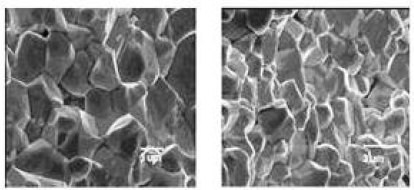Coexistence of Ferromagnetic and Antifferromagnetic Phases in PLZT Ceramics
Abstract
Study of dielectric, ferroelectric and structural behavior of the lanthanum modified PZT ceramic system is performed. The ferroelectric and antiferroelectric characteristics as well as the dependence of its properties with the lanthanum concentration are discussed. The structural analysis show two phases at room temperature. Asymmetrical curves are obtained in the temperature dependence of the dielectric permittivity around the transition temperature, which is characteristic of an antiferroelectric-paraelectric phase transition. On the other hand, the increment of the lanthanum concentration provides slim P-E loops.

This work is licensed under the Creative Commons Attribution-NonCommercial 4.0 International (CC BY-NC 4.0) license.








